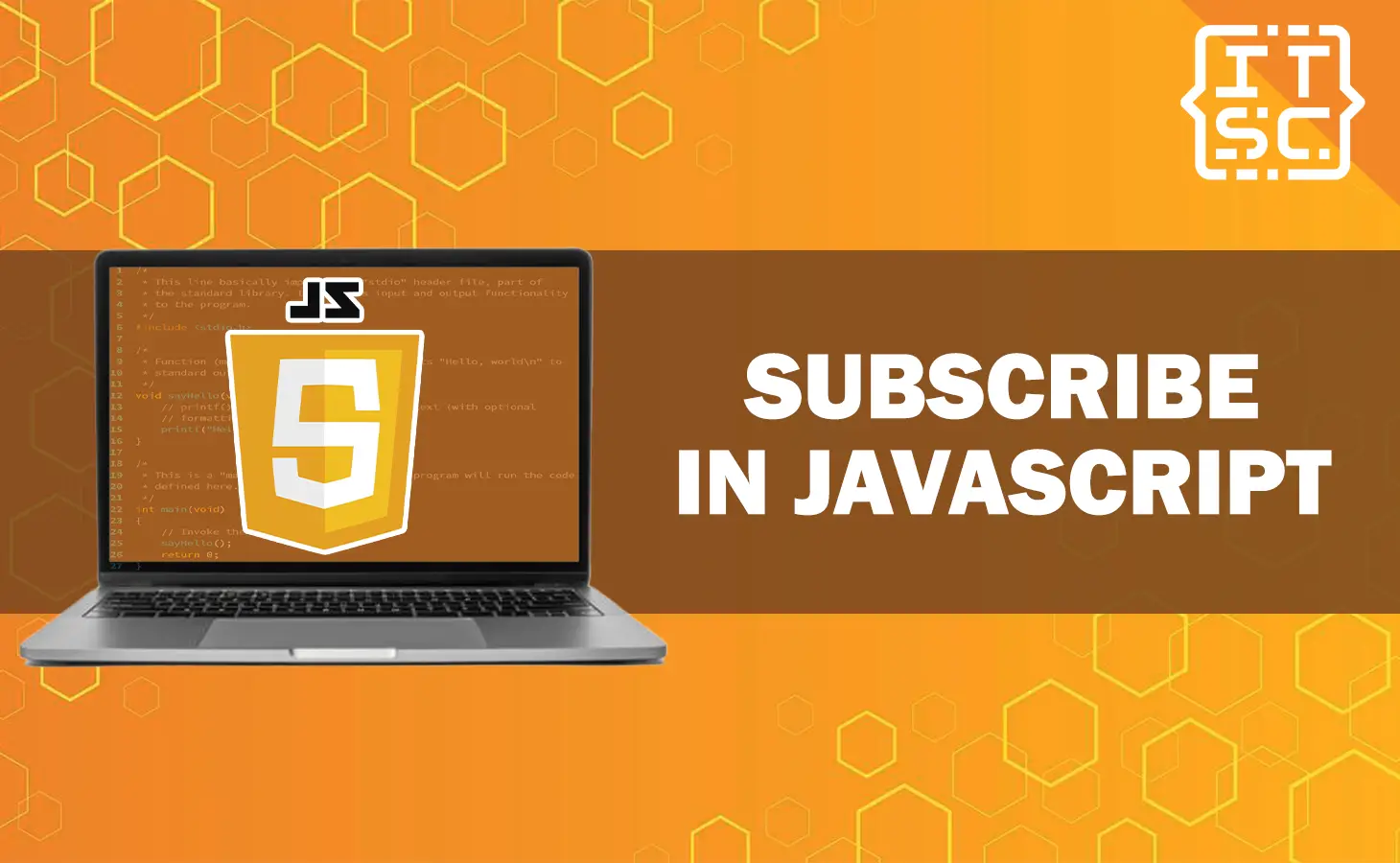In this article, we will uncover the full potential of asynchronous data handling in JavaScript with our comprehensive guide to using the .subscribe() method.
Don’t miss out on this opportunity to enhance you knowledge in your JavaScript skills.
With out further ado, let’s begin.
What is subscribe in JavaScript?
The .subscribe() method or function in JavaScript is used to listen and respond to an Observable.
An Observable is a tool that helps us handle data that comes in asynchronously, like when we get data from an API.
When we use .subscribe(), we provide an object called an observer that tells us what to do with the data that the Observable sends us.
For instance, let’s say we have an Observable that fetches a list of tasks from an API. We can use .subscribe() to say what we want to happen when we receive the data successfully.
We can also define what to do if there’s an error or when the Observable is done sending data.
The .subscribe() method is similar to the .then(), .catch(), and .finally() methods of a Promise, but instead of dealing with Promises, it works with Observables.
If you want to perform certain actions when there is an error (similar to .catch()) or when the task is completed successfully (similar to .finally()).
You can include that logic within the subscribe method, as demonstrated below:
Observable.subscribe(
value => toDoOnlyOnSuccess(value),
error => toDoOnlyOnError(error),
() => somethingtoDoAnyCase()
);In a simple understanding, the .subscribe() method is a JavaScript object that determines how you handle the notifications you receive.
When you use the subscribe() function, it provides you with a Subscription object. This object has an unsubscribe() method that you can use to stop receiving notifications.
How to use the .subscribe() method in JavaScript?
To use the .subscribe() method in JavaScript, you first need an Observable.
An Observable helps you manage data that comes in asynchronously, like when you get data from an API.
You can create an Observable using the Observable constructor or by using the ready-made methods provided by the RxJS library.
Here’s the example:
// create an Observable that emits a value after 1 second
const myObservable = new Observable((observer) => {
setTimeout(() => {
observer.next("Hi, welcome to Itsourcecode!');
observer.complete();
}, 1000);
});
// subscribe to the Observable
myObservable.subscribe(
(value) => {
// handle emitted value
console.log(value);
},
(error) => {
// handle error
console.error(error);
},
() => {
// handle completion
console.log('Observable completed');
}
);
In this particular case, we generate an Observable that sends out a message (“Hi, welcome to Itsourcecode!”) after a 1-second delay and then finishes.
Next, we subscribe to this Observable using the .subscribe() method, where we pass three callback functions as arguments.
The first callback function executes when the Observable emits a value, the second runs in case of an error, and the third is triggered when the Observable completes.
Output:
Hi, welcome to Itsourcecode!
Observable completedConclusion
In conclusion, this article has provided a comprehensive guide to using the .subscribe() method in JavaScript for asynchronous data handling.
The .subscribe() method is used to listen and respond to an Observable, which helps manage data that comes in asynchronously, such as data from an API.
The article explained how to use the .subscribe() method by creating an Observable and subscribing to it with callback functions for handling emitted values, errors, and completion.
By utilizing the .subscribe() method effectively, you can enhance your JavaScript skills and efficiently handle asynchronous data in their applications.
We are hoping that this article provides you with enough information that helps you understand to subscribe in JavaScript.
You can also check out the following article:
- Guard clauses JavaScript
- Remove class after 5 seconds JavaScript
- JavaScript array includes multiple values
Thank you for reading itsourcecoders 😊.

